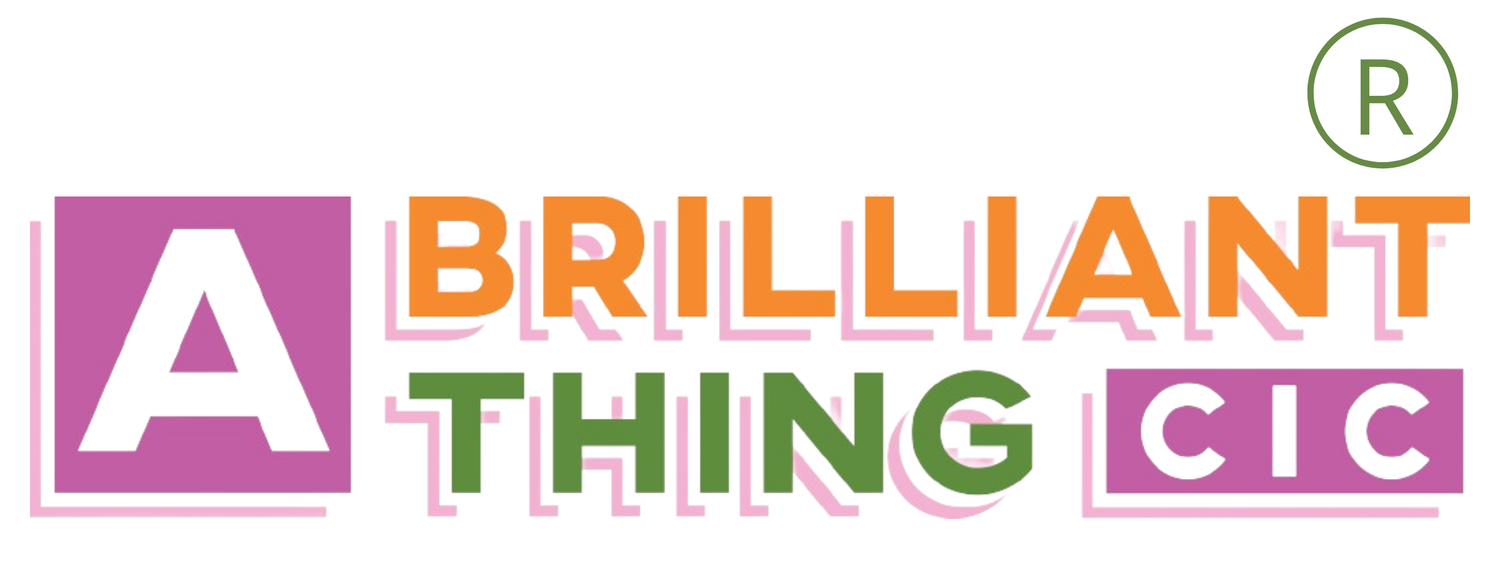Blog: Trauma Informed Communities
During April 2023 to March 2024, A Brilliant Thing CIC worked with VCSE organisations and Public Health in Bolton to understand how to become trauma informed as a sector. We learnt a huge amount about how community organisations respond to trauma and support people to heal.
The aim of the project was to “Create a trauma responsive place, with a strengths-based and community asset approach to building local resilience”.
Design Question
How could the community sector prevent, protect, and support individuals while mitigating trauma's consequences and developing a supportive place to live?
We contacted over 70 organisations and spoke to voluntary sector networks to promote the programme and raise awareness. We had approximately 89 conversations with VCSE sector organisations and volunteers specifically about this work. We used design thinking and co-created an accessible toolkit and support programme, with resources codesigned by Bolton VCSE and volunteers, people with lived experience of trauma and creative practitioners. The toolkit helps equip the sector to adopt trauma-informed ways of working that help everyone feel safe and supported.
Trauma Informed Design Principles
Through the project we developed some trauma informed principles that supported things to progress in a healing centred way. These included:
Rhythm and Ritual - practices and processes that create patterns and certainty
Filter - clarity to help sort, prioritise and choose - what is okay? What is not okay?
Collide and align- bringing together ideas from different sources and blending to create something new - widens perspective and creates opportunity for new thinking
Transition - pauses for processing, making connections and reflection
Contribute and benefit - balancing giving with receiving to maintain equilibrium (across all domains, energy, finances, relationships, work, family, health etc)
Reflective Practice strengthening principles
Embedding Reflective Practice in combination with these principles was useful for both participants and practitioners. One facilitator reflected:
“We know that creating a culture of reflection at work is crucial, one that fosters personal growth and continuous improvement. In this session, it was encouraging to see participants actively embracing the idea of exploring their own growth mindset and learning from their mistakes.
This eagerness to engage in discussions and participate in design thinking activities is a positive sign that people are open to self-reflection and collaboration. It's crucial to nurture this enthusiasm and build upon it. I felt reassured that participants were getting the idea of the importance to reflect, not only about their own mistakes and successes but also their organisation.”
Over to you…
How might you use these design principles in your work or life?
Rhythm and Ritual - What do you do that creates patterns and certainty?
Filter How do you sort, prioritise and choose - what is okay? What is not okay?
Collide and align Can you find ideas from different places and blend to create something new?
Transition Where do you pause for processing and reflecting?
Contribute and benefit When are you giving? When are you receiving? (consider energy, finances, relationships, work, family, health)

